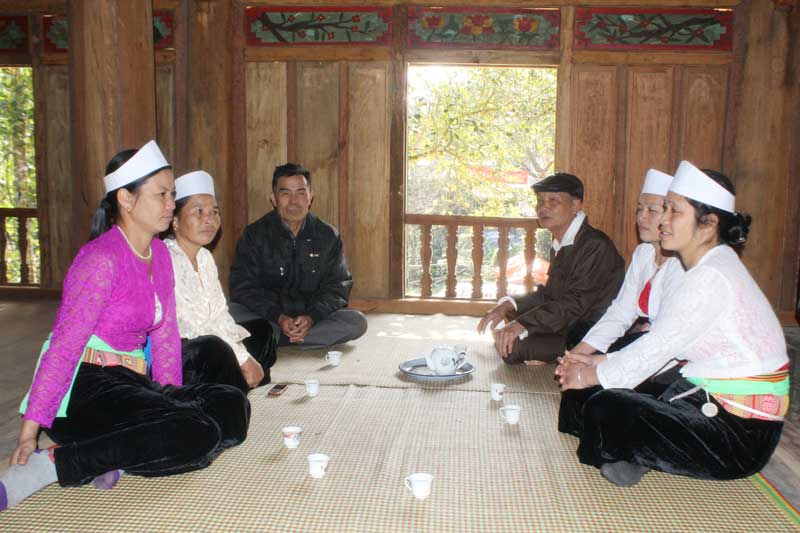


 Doi singing is a special cultural activity taking place in
daily life of Muong ethnic people. Photo taken at Ngoc Lau commune (Lac Son).
Doi singing is a special cultural activity taking place in
daily life of Muong ethnic people. Photo taken at Ngoc Lau commune (Lac Son).
Doi singing, in fact, is a conversation, confrontation in the daily life of Muong ethnic people. The space for Doi singing can be on the fields, in the roof of a stilt house or anywhere. The difference here is that the words of the heart, the story is "set to music”, so it has the rhythm, making people "drunk” each. In the past, each Muong village had good singers of Doi, who is respected by the people in the village. Therefore, whenever there is festival in the village, the good singers of Doi are hunted. The criteria to asses a good singer of Doi are very strict. In addition to possessing a sweet and rich voice, that person must be very active with rhyming and rhythmic words like rhyme of poetry. Due to the attractiveness of Doi singing in Muong villages, there used to be a lot of singings overnights. Many people were so passionate about their singing that they became husband and wife.
Rhyming and rhythmic words to create good singing is essentially a rhyme like the rhyme of sin-eight-word distich meter. That is, the sixth word of a six-word sentence must rhyme with the sixth word of an eight-word sentence. Folk artists have also applied this principle to compose Muong songs. For example, Mrs. Bui Thi Xuan in Voi hamlet, Lien Vu commune has composed dozens of Muong songs for many years. In the book recording dozens of songs of Mrs. Xuan, we all realize that if we do not "set to music” in accordance with the Muong folk song, these are all poems composed in the form of sin-eight-word distich meter.
The quality of poetry in Doi singing is expressed not only through the principle of composing many similarities with the form of sin-eight-word distich meter, but also through romantic images or the rhetoric that the singers in Muong villages have skillfully been using. In particular, the topic of love singing clearly expresses the way that boys and girls of Muong cleverly use the metaphorical images to express their feelings.
In short, it is the soft rhyming and the use of subtle rhetoric that have created an appeal for the sentences of Doi singing of Muong ethnic people. Although Doi singing has gradually disappeared, in remote and upland areas, Doi singing is still a popular lifestyle of Muong ethnic people. Especially, in the happy spring days, welcoming the New Year, the sentences of Doi singing resound in Muong villages and in folk festivals in early spring.